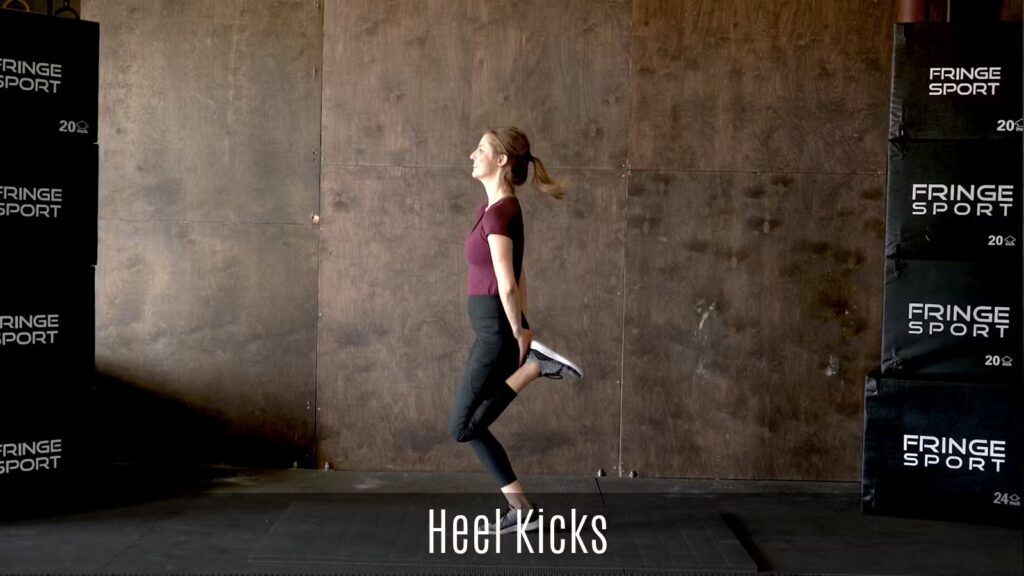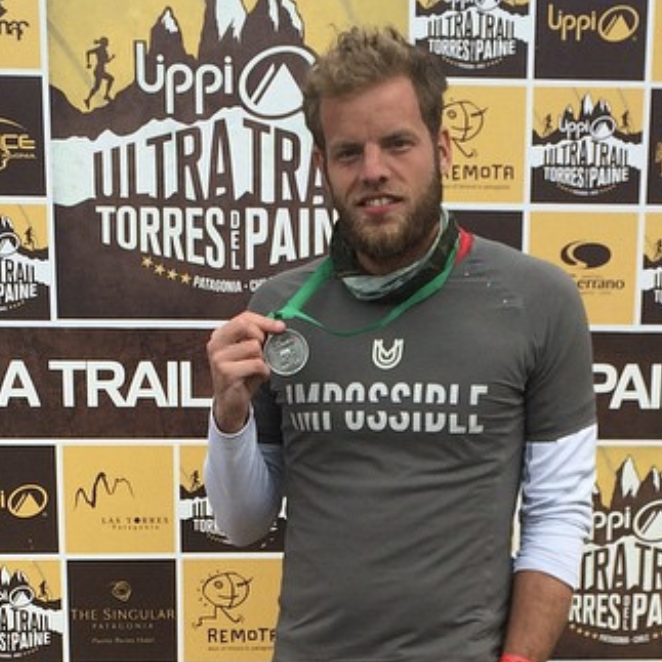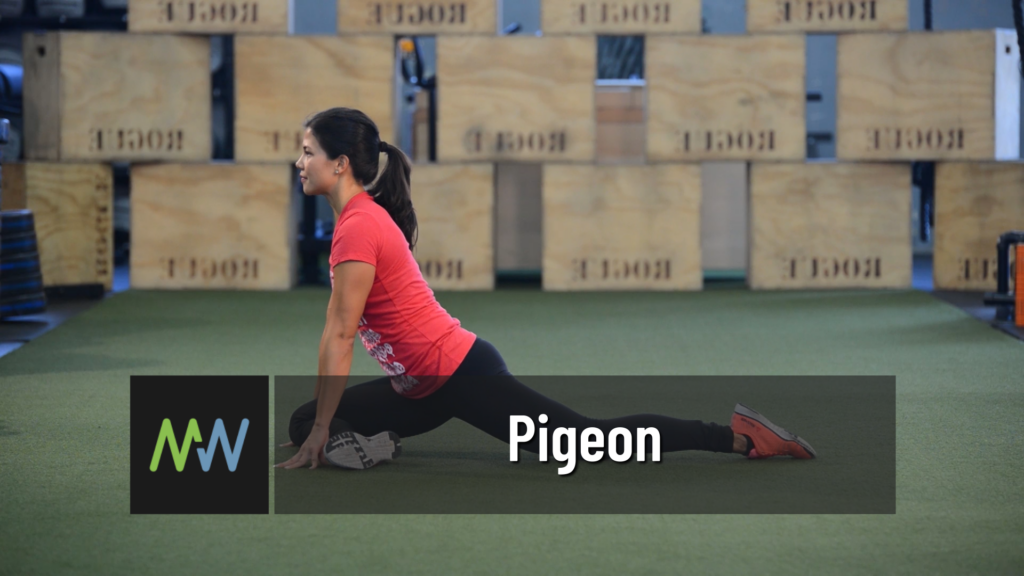Sometimes we all need a kick in the butt, right? Especially when it comes to getting enough exercise. This is where Heel Kicks come into your life. Long used as a warm-up for both sprinters and long distance runners, this old school classic will get your heart racing and your hamstrings and glutes engaged as you kick yourself (literally) in the behind.
If you’re an avid soccer or basketball player, you’ll also find this hybrid stretch/exercise a great movement to incorporate into your routine before a game. That being said, you most definitely don’t have to be an athlete to do this heel kick movement. If you’re looking for a dynamic stretch that can help strengthen your lower body muscles and build power, these heel kicks can easily be implemented into your weekly routine.

What are Heel Kicks?
As with many of our favorite movements, this exercise requires no special equipment – just some free space to move around and some sturdy shoes. Although you could do this barefoot, if you prefer, we always recommend shoes as they will provide protection and a sturdy surface for your feet.
The movement itself is pretty self-explanatory. You’re going to essentially kick yourself in the butt with your heels. More specifically, though, you alternate bringing your heels up towards your glute muscles giving your glute a small tap with your heel.
At the top of this stretch, your knee should be pointing down towards the ground and your thigh should move as little as possible. This requires the hamstring muscle to contract, and chances are you’ll feel a resulting stretch through the quadricep muscle and hip flexor.
Once one heel has made contact with the glute (or gotten as close as possible), return the foot to the floor and repeat on the opposite side. Try your best to stay light on your feet while performing these heel kicks. What that means is that you want to try to stay on the balls of your feet versus landing heavy on the heels or the entire foot. This will help you sync up with a rhythm, complete the movement quicker, and prevent any missteps. Since this is a movement that requires a quick jumping motion, take care that the space around you is free from anything that may cause you to trip.
We recommend performing heel kicks in place. Start slowly finding a smooth rhythm as you alternate between legs. Once you’ve built confidence in your ability to perform this movement, start to increase your speed – aiming for full range of motion.
To help with your balance, you can bend your arms in front of you as a counter-balance. This position will look like the same way you would hold your arms while going on a jog. But as always, these are suggestions. Ultimately, you need to find what positioning works best for you!
Heel Kick Benefits
Heel Kicks are a Plyometric movement. This means that they aim to develop explosive muscle power through the use of quick bursts of energy. (Check out this link for other plyometric exercises.) Heel Kicks do just that while improving your acceleration and endurance, burning calories, strengthening your leg muscles and improving your cardiovascular health.
Most importantly, they target the fast-twitch muscle fibers in your hamstrings and glutes which power your sprinting and jumping abilities. For this reason, runners love their Heel Kicks before hitting the track. Heel Kicks will also help prevent injury by stretching out the muscles and increasing blood flow to the upper-leg region.
Heel Kick Modifications
If this is a new movement for you, we recommend starting out slowly. Instead of jumping right into the movement and completing for a certain amount of time, try a few in place to get the rhythm of the movement.
If you are using these as a warm up exercise, we recommend performing these towards the end of your warm up routine. Hopping from one foot to the other requires a certain amount of balance and coordination as well as requires your knees, hip, and ankles to work in tandem with each other. Ensuring that these joints are properly warmed up and primed for this plyometric movement will ultimately benefit you. You can also check out Butt Kicks which is a similar movement, but more often used as a traditional “warm up” exercise.
This powerful movement can also be used as an exercise in a workout. It will help you build up explosive power, leg strength, and cardiovascular endurance. If performing these as a traditional exercise, think about doing them with as much force as possible…while staying safe, of course. Paired with other body weight, plyometric movements (think plyo push ups, star jumps, or speed skaters), you’re sure to receive a great and sweaty full-body workout. Don’t forget to refuel with nutrient-dense foods after your workout to get the gains!
How to perform Heel Kicks
Start in an upright, standing position with your feet shoulder width apart and your neck and spine erect. Your hands are at your sides.
Shift your weight to your right foot and in a quick movement bring your left foot back behind you so your heel gets as close as possible to your glutes. Keep your left knee pointed down and move your thigh as little as possible.
Bring your left foot back down to rest flat on the ground and then repeat the same backwards kicking motion for your right foot.
Keep repeating this alternating motion in a ‘running in place’ movement. Your arms can bend up and out in front of you to help maintain your balance.
Start slow and work your way up to a faster pace and a greater degree of force as you get better at the movement.


